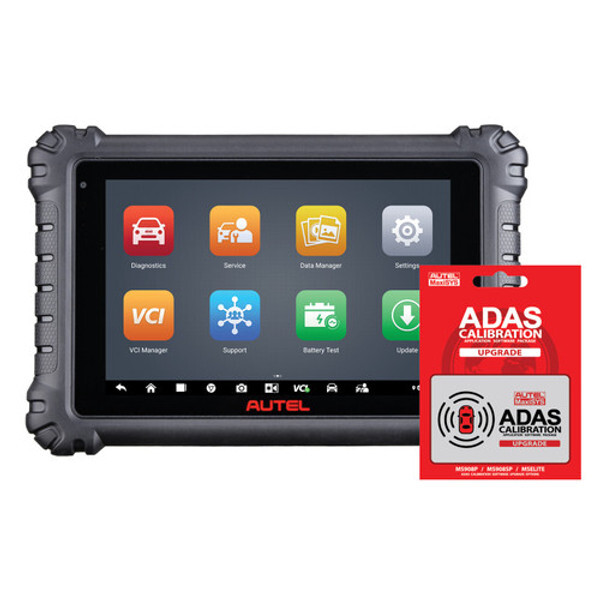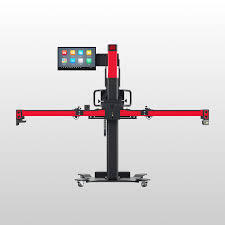In this article, we break down what the different types of equipment needed for ADAS calibrations.
Understanding ADAS Calibration
Before we dive into the equipment, let's understand the significance of ADAS calibrations. ADAS systems rely on sensors such as cameras, radar, and LiDAR, to perceive the vehicle's surroundings accurately. Calibration ensures that these sensors are accurately aligned and calibrated to the manufacturer's specifications. Even minor misalignments or inaccuracies can compromise the functionality of ADAS features, potentially leading to safety risks.
Essential Equipment for ADAS Calibration:
1. Target Boards And Calibration Components :
These are the items that the vehicle's safety systems sense; they vary by vehicle make, model, and type of calibration performed. These typically are attached to the calibration frame or have their own stands. For anything involving cameras (e.g. lane keep assist, lane departure warning, etc.), target boards - or mats in the case of all-view-monitor systems - serve as reference points during calibration, allowing sensors to detect and align with specific patterns or markers. These boards come in various geometric shapes, sizes, and dimensions, depending on the type of sensor being calibrated. They often feature intricate patterns or reflective materials to aid sensor recognition. They allow sensors to calibrate their field of view, focal length, and other parameters accurately.
Another class of calibration components include reflectors, which are metal cones which the vehicle's radar systems use in their calibration; radar systems are typically used in front collision warning, automatic cruise control, and blind spot monitor safety systems, among others.
At ADAS Depot, we believe that you should invest in calibration components only as needed, and have a section on our website where you can browse by OEM. If you think you will perform work across a wide variety of makes and models, and want to be prepared, we also offer bundles that cover most of the equipment needed.
2. Calibration Frame:
A calibration frame provides a stable and precisely measured platform for mounting target boards. It ensures that the boards are positioned accurately in relation to the vehicle's geometry, facilitating precise sensor calibration. For example, the Autel IA900 offers precise distance measurements (to the millimeter) to help you ensure a safe vehicle calibration. The IA900 also allows you to perform wheel alignment verification, which we discuss later. A frame is a necessary component for most calibrations.
3. Tablet:

A diagnostic tablet, or diagnostic scan tool, accesses the vehicle's onboard computer systems and performs the calibration procedures. It allows technicians to communicate with the vehicle's electronic control units (ECUs), retrieve diagnostic trouble codes (DTCs), and initiate calibration routines as per the manufacturer's guidelines. This is necessary for just about all ADAS calibrations, and is about as high a return-on-investment purchase as possible, as it allows you to do pre- and post-scans of vehicles.
4. Alignment Aids and Accessories
Lasers and Laser Targets: Lasers and laser targets are used to establish precise reference lines and points during ADAS calibration procedures. They provide visual guides for aligning components such as target boards, calibration frames, and vehicle sensors. For example, when calibrating surround view cameras, you can ensure that the floor mats are accurately placed relative to the vehicle tire center-line.
Digital Angle Gauge (Inclinometer): A digital angle gauge, also known as an inclinometer, is a device used to measure angles with high accuracy. In ADAS calibrations, digital angle gauges are utilized to ensure the correct orientation and inclination of sensors, particularly during blind spot sensor calibrations.
Plumb Bob: A plumb bob is a weighted object suspended from a string, used to establish vertical reference lines. In ADAS calibration, plumb bobs are employed to establish the exact centerline of the front radar. This will allow you to mark a point on the floor and ensure precision.
5. Specialty Tools:
Various specialty tools, such as radar wrenches, torque wrenches, socket sets, and trim removal tools, are often required during ADAS calibration procedures. These tools facilitate the removal and installation of vehicle components without causing damage, ensuring a seamless calibration process.
6. Wheel Alignment Verification System:
A wheel alignment verification system is highly recommended for ensuring that the vehicle's wheels and suspension components are correctly aligned before ADAS calibration. Many OEMs require wheel alignment before performing ADAS calibrations, as it directly affects the accuracy of ADAS sensors, especially those reliant on camera-based systems. And many of our bundled packages come with wheel alignment verification equipment, which is done in conjunction with the IA900 frame.
Conclusion:
ADAS calibration is complex and demands specialized equipment and expertise. We hope that by breaking down the different types of equipment needed for ADAS calibrations, you have a better understanding of how the different components work together. By investing in the essential equipment mentioned above, automotive technicians can be confident in their ADAS calibration procedures, thereby enhancing vehicle safety and performance.
If you liked this content, please subscribe to our newsletter for more great posts.





